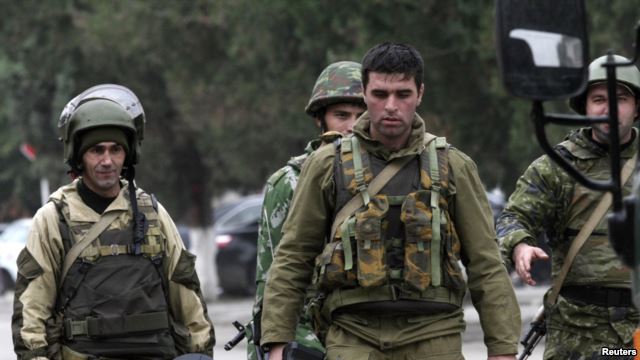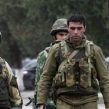
Chechen Authorities’ Hidden War Against Militants
Publication: Eurasia Daily Monitor Volume: 11 Issue: 39
By:

In the past week, many people in Chechnya saw an anonymous video of clashes at the administrative border between Chechnya and Ingushetia. The video was apparently recorded by a Chechen police officer, but the authorities, trying to conceal the clashes from the public, disliked the fact that people in Chechnya kept forwarding the video file to one another over the Internet. Currently, there is only circumstantial evidence that the clashes actually took place; officially, the situation in Chechnya is entirely peaceful and stable.
In November 2013, there was an incident in which a jet made an emergency landing in the city of Voronezh (https://ria.ru/incidents/20131113/976674706.html). There would have been nothing especially interesting about this event, had it not been for the fact that the jet was carrying Russian military personnel who were wounded in Chechnya and required emergency evacuation to Moscow for medical treatment (https://www.chr.aif.ru/voronezh/incidents/1023131). Overall, six servicemen were evacuated to Moscow, instead of to the military hospital in Vladikavkaz or in Rostov, indicating they had suffered very serious injuries. Yet there were no reports of any clashes in Chechnya in which six Russian soldiers were injured, and they were certainly not included in the list of Russian casualties in the North Caucasus. So had there been no emergency landing of the jet, the public would not have known about the six servicemen having been wounded in Chechnya.
This latest incident revealed in last week’s leaked video was similar. No media reported clashes in Chechnya, but people throughout the republic who watched the footage could see that fighting had occurred on the administrative border with Ingushetia. The video is only three minutes long and shows a group of people in military uniform looking at corpses. The person recording the video comments on it in Chechen. Government servicemen are shown on the video looking with exasperation at several slain Chechens. Four corpses are shown. The people on the video indicate that another group of police officers is at an insurgent base. The videographer angrily says that government forces lost four people in the clashes.
Thus, clashes that claimed the lives of eight or nine people remained outside Russian media coverage. The funeral of a serviceman from the special police unit in the city of Argun confirmed that the clashes indeed too place. Many things can be hidden in Chechnya, but funerals become public knowledge regardless of the size of the city or village. Relatives, clan members, neighbors, friends and nearby residents are expected to attend funerals. Thus thousands of people in Argun learned that there was a funeral of a serviceman killed in combat. The clashes that resulted in his death most likely took place in the Sunzha and Achkhoi-Martan districts of Chechnya, which border Ingushetia. In the video, snow is visible in the Chechen lowlands. Since the first snow fell in Chechnya’s lowlands on January 21, the clashes must have taken place sometime between the end of January and the beginning of February. The website of the North Caucasian rebels, Kavkazcenter.com, belatedly reported on clashes in this area. According to the website, the fighting took place around the village Yandi in Chechnya’s Achkhoi-Martan district, which is near the border with Ingushetia. The website reported that five or six police officers were killed, but it did not mention casualties among the militants (https://kavkazcenter.com/russ/content/2014/02/17/103194.shtml).
Citing local residents, the website reported that a helicopter used in the special operation was damaged. The website, however, did not provide any evidence.
Kavkaz Center also reported fighting in the Sunzha and Achkhoi-Martan districts of Chechnya on February 15–16, in which government forces suffered between 5 and 15 casualties (https://kavkazcenter.com/russ/content/2014/02/17/103190.shtml). The website also asserted that there was a significant concentration of military and police forces in the area of the Chechen-Ingush border. This is understandable since the Russians, in the run-up to the Winter Olympics in Sochi, were trying to prevent rebel attacks. This area is also the permanent base of Doku Umarov, the leader of the North Caucasian jihadists, whom Chechen leader Ramzan Kadyrov recently declared dead (https://www.interfax.ru/russia/news/352054). However, not having the body of the insurgent leader to show to the public, the Chechen authorities are trying to find where he was buried. Even Russian Prime Minister Dmitry Medvedev slightly rebuked Kadyrov for making such bold statements without providing hard evidence (https://rbcdaily.ru/society/562949990331572).
Whether Umarov is alive or dead is not of critical importance to the militants. Umarov’s name is only a symbol of unity for the North Caucasian jamaats (Velayats in the Caucasus Emirate). In fact, the probability of Umarov being still alive is not very high, given that his last broadcast dates back to August 2013. His successor is likely to be quite similar to Umarov in terms of the role he will play in the insurgency. The head of the Caucasus Emirate does not govern the militant groups or plan operations. He is only a unifying figurehead for the insurgency, allowing the jamaats—Kabardino-Balkar-Karachay, Dagestan, Ingushetia and Chechnya—to function autonomously.
As both last week’s leaked video of dead security personnel and last year’s emergency landing of a jet with wounded servicemen onboard illustrate, collecting truthful information on military operations and casualty figures from Chechnya and Ingushetia is likely to become increasingly difficult. Losses of servicemen, like those described above, do not make it into the glossy annual reports produced by the organizations that monitor the situation in the North Caucasus. And this situation continues to create a distorted picture of the reality on the ground in the region.




